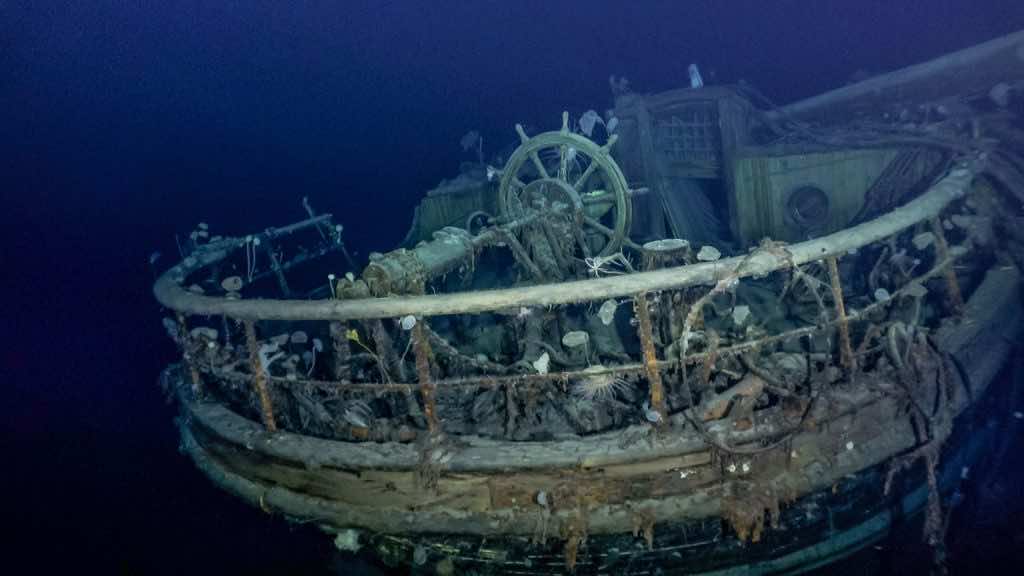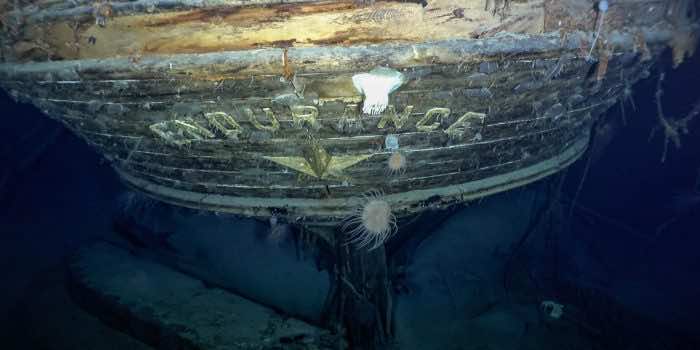The Endurance, a ship that sank in 1915 during an excursion headed by Ernest Shackleton, was finally located. It is approximately 10,000 feet below the surface of Antarctica’s icy waters.
The ship was just a tiny portion of the thrill for some marine biologists. Even more fascinating are the deep-sea species that have made it their home.
“The ship is cool, but look at those things living on it,” said Huw Griffiths, a marine biogeographer at the British Antarctic Survey, who was not part of the discovery expedition.
According to him, the sunken ship is a life-giving sanctuary for deep-sea species. The ocean floor in Antarctica contains a few other massive structures like this that give a foundation for nascent anemones, sea squirts, and other organisms to take hold. “Their larvae and eggs are just floating around, and this is kind of like paradise for them,” Griffiths stated.

The majority of the species are filter feeders. They use various gripping appendages to suck material from the ocean, such as plankton or faeces, which fall from shallow depths. Though these black waters appear lonely and devoid of life, they are teeming with nutrients.
According to Griffiths, these creatures have grown over millions of years to tolerate freezing temperatures that drop below -2 degrees Celsius in this region. Antifreeze compounds are found in the blood of some fish, and many Antarctic species develop “heat-shock” proteins that keep their cells intact. “It appears hostile to us,” Griffiths said, “but it’s probably perfect for what these animals are adapted to.”
Rising temperatures related to climate change reduce Antarctic sea ice, which has hit a record low this year. Griffiths believes this is one of the reasons the group, led by the Falkland Maritime Heritage Trust, was able to locate the ship.
However, the organisms that live on the ocean floor are generally safe from the severity of climate change. Temperatures don’t fluctuate much down there even while they rise in shallow waters., according to him. While the Southern Ocean is rapidly getting acidic as it collects carbon dioxide from the atmosphere, most of the species on the wreck lack a skeleton or shell that may dissolve readily.
It’s also a good thing because creatures in the Antarctic are not just strange but also primarily unidentified. According to Griffiths, 10 to 20% of species brought back from expeditions are novel to science.
But what do some of these creatures look like? These species have the appearance of plants, yet they are deep-sea invertebrates. They are 480 million years old. Griffiths described it as a “living fossil.”
:no_upscale()/cdn.vox-cdn.com/uploads/chorus_asset/file/23301323/END_22_EPK_WRECK_STILL_IMAGES_1_Credit___Falklands_Maritime_Heritage_Trust_and_National_Geographic._Caption___Taffrail_and_ship_s_wheel__aft_well_deck__1_.jpg)
The lily, which is held in place by a stem, employs hair-like structures on its head to capture debris floating in the freezing water. Griffiths believes they are connected to sea stars and bristle stars. While most of the species on the sinking ship remain immobile, Griffiths discovered a crab. This is the first instance of a crab residing in the Weddell Sea, according to Griffiths.
“They’re not known to exist in the water this cold,” he said. “It’s the last thing I would expect to find on this wreck. This crab shouldn’t be there.”
:no_upscale()/cdn.vox-cdn.com/uploads/chorus_asset/file/23301373/END_22_EPK_WRECK_STILL_IMAGES_4_Credit_Falklands_Maritime_Heritage_Trust_and_National_Geographic_Caption___The_stern_of_the_Endurance_with_the_name_and_emblematic_polestar__1_.jpg)
Massive anemones coated the ship as well. Their tentacles have specific stinging cells that direct food into their mouth.
:no_upscale()/cdn.vox-cdn.com/uploads/chorus_asset/file/23301630/END_22_EPK_WRECK_STILL_IMAGES_1_Credit___Falklands_Maritime_Heritage_Trust_and_National_Geographic._Caption___Taffrail_and_ship_s_wheel__aft_well_deck__3_.jpg)
Griffiths also spotted a Brisingid sea star. Unlike other types of stars, these species filter their meal from the open ocean by waving their arms in it.


